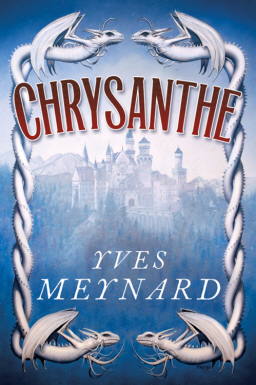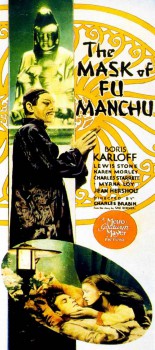In Defense of Red Sonja: Not the Female Conan
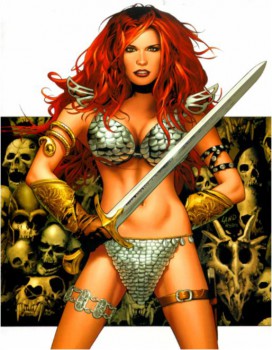 Red Sonja is nearing forty and, even if you don’t recognize the name, you know her. She’s the original girl in the chain mail bikini. There have been warrior women before (Jirel of Joiry) and since (Xena). But when you imagine sexist cheesecake portrayals of women in fantasy, the sort of thing modern creators try to avoid at all costs, you imagine Red Sonja, She-Devil with a Sword. And, frankly, she’s gotten a bad rap.
Red Sonja is nearing forty and, even if you don’t recognize the name, you know her. She’s the original girl in the chain mail bikini. There have been warrior women before (Jirel of Joiry) and since (Xena). But when you imagine sexist cheesecake portrayals of women in fantasy, the sort of thing modern creators try to avoid at all costs, you imagine Red Sonja, She-Devil with a Sword. And, frankly, she’s gotten a bad rap.
She’s a bit of an accidental icon, the sort of strong female character that could only be imagined by men in the midst of the Sexual Revolution.
The Shadow of the Vulture
Red Sonja was originally created by Roy Thomas (though based heavily on Robert E. Howard’s Red Sonya from “Shadow of the Vulture”) as a supporting character in the Conan the Barbarian series. The idea was to present a recurring female character who wasn’t just rescue bait for the Cimmerian, someone who could handle herself in a fight and win his respect as well as an appreciative leer. The iconic red hair was chosen simply because the only two prominent female adventurers in Howard’s original Conan stories were Belit (black hair) and Valeria (blond hair) and Thomas wanted an easy way to differentiate her from them.
Red Sonja first appeared in Conan the Barbarian 23 (February 1973) in a story also titled, “Shadow of the Vulture” (a loose adaptation transposing the setting from the 16th century Ottoman Empire to the Hyborian Age). Conan first encounters her as he races to the gates of Makkalet, a hundred raiders following behind him. As the gates open and Conan is running in, we see Red Sonja running out to meet the raiders, with sword drawn and her own mercenary army at her back. Within five panels of her first appearance, we get the classic description of Red Sonja as “a she-devil more beautiful than the flames of Hell.”
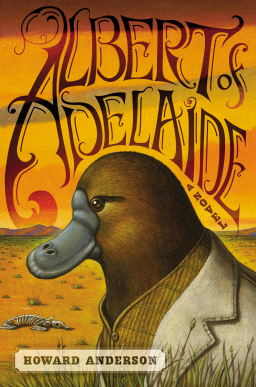


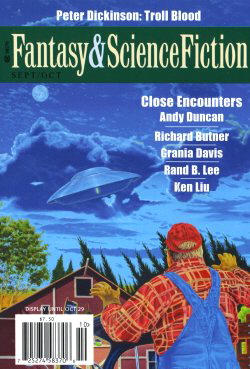 Andy Duncan gets the cover this issue for “Close Encounters,” a rural tale of alien abduction. Here’s what Lois Tilton says about it in her review at
Andy Duncan gets the cover this issue for “Close Encounters,” a rural tale of alien abduction. Here’s what Lois Tilton says about it in her review at 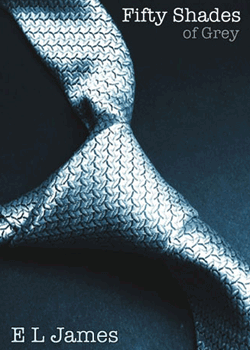
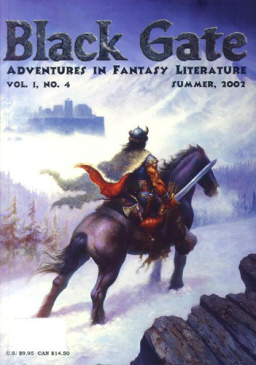
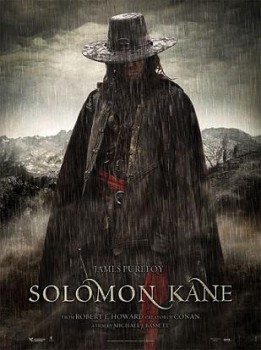 The sixteenth- and early seventeenth-century Puritan adventurer Solomon Kane is my favorite of Robert E. Howard’s serial characters: a fascinating mixture of obsession, religion, righteousness, history, and dark fantasy awesomeness. However, it’s the character I love, not necessarily the stories in which he appeared. With the exception of “Wings in the Night,” the Solomon Kane stories are mid-range pieces in Howard’s canon, not at the consistent level he delivered later with Conan, King Kull, or many of his one-shots. Solomon Kane appeared early in Howard’s short professional pulp career, with the first published story in the August 1928 issue of Weird Tales. Perhaps if Howard stayed longer with the Puritan hero while his storytelling skills increased, he might have equaled the Conan series in quality.
The sixteenth- and early seventeenth-century Puritan adventurer Solomon Kane is my favorite of Robert E. Howard’s serial characters: a fascinating mixture of obsession, religion, righteousness, history, and dark fantasy awesomeness. However, it’s the character I love, not necessarily the stories in which he appeared. With the exception of “Wings in the Night,” the Solomon Kane stories are mid-range pieces in Howard’s canon, not at the consistent level he delivered later with Conan, King Kull, or many of his one-shots. Solomon Kane appeared early in Howard’s short professional pulp career, with the first published story in the August 1928 issue of Weird Tales. Perhaps if Howard stayed longer with the Puritan hero while his storytelling skills increased, he might have equaled the Conan series in quality.